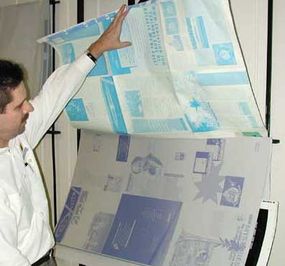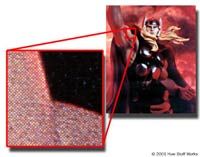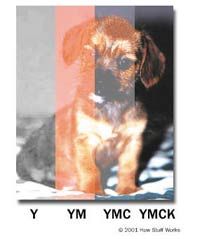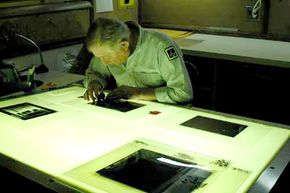Step One: Pre-press Production
Before the job can be printed, the document must be converted to film and "plates." In the case of How Stuff Works Express, film negatives are created from digital files. Images from the negatives are transferred to printing plates in much the same way as photographs are developed. A measured amount of light is allowed to pass through the film negatives to expose the printing plate. When the plates are exposed to light, a chemical reaction occurs that allows an ink-receptive coating to be activated. This results in the transfer of the image from the negative to the plate.

There are different materials for plates, including paper (which produces a lower-quality product). The best plate material is aluminum, which is more costly.
Advertisement
Each of the primary colors -- black, cyan (blue), magenta (red), and yellow -- has a separate plate. Even though you see many, many colors in the finished product, only these four colors are used (you'll also hear this called the four-color printing process -- it's a little like the three-color process used in television).


We'll talk more about this later as we explore color and registration control.
